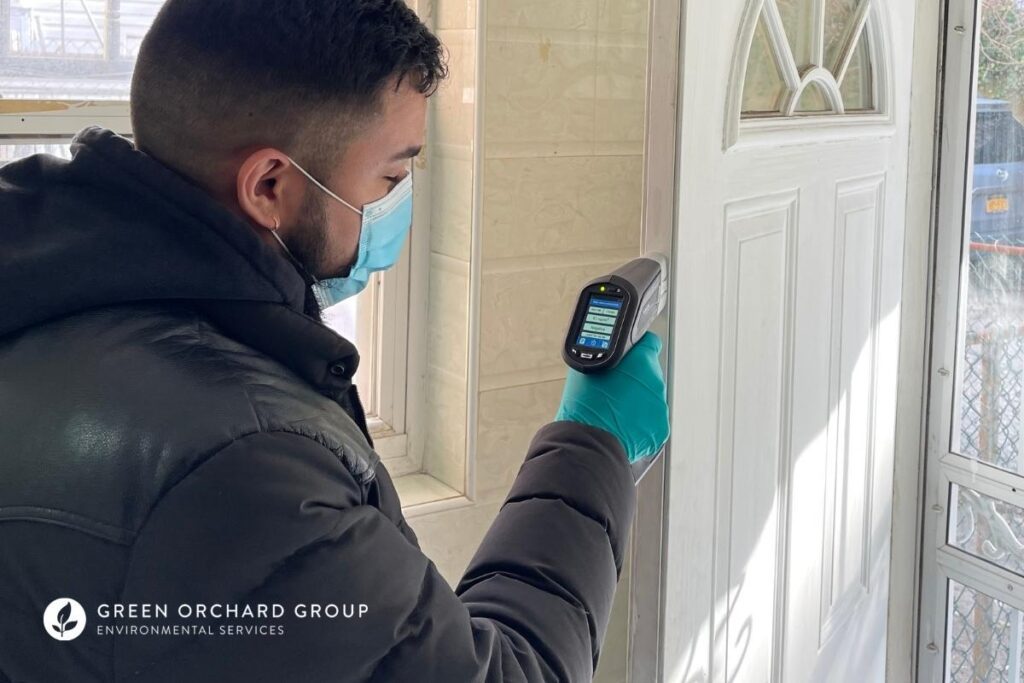
Lead paint is a big problem in New York City, especially in homes with young children. That’s why Local Law 1 (“The NYC Childhood Lead Poisoning Prevention Act”) was enacted in 2004 to protect families from the threat of lead-based paint hazards.
But not all lead paint constitutes a “hazard,” at least according to the official definition.
According to the EPA, the term lead-based paint hazard means “lead-contaminated paint that is deteriorated or present in accessible surfaces, friction surfaces, or impact surfaces…”
In other words, whether or not lead paint is a hazard depends on its condition and location.
Here’s a list of common lead-based paint hazards from the NYC Department of Housing Preservation and Development (HPD) website:
- Peeling, chipping, or damaged lead paint
- Dust from deteriorating lead paint
- Lead paint on crumbling plaster or rotted wood
- Lead paint on doors, door frames, windows, and window sills that stick or rub together
- Lead paint on other surfaces that children can chew or that get a lot of wear-and tear
High Risk Surfaces
A high risk surface is any area of the house where lead-based paint is present and is likely to deteriorate. This can be paint that’s peeling, chipping, chalking, damaged, or damp.
There are millions of old homes that have lead-based paint that has been covered by newer coats of “safe” paint. Typically, if the new layers of paint are well maintained, the lead based paint isn’t problematic.
However, if you do have an old home or apartment, it’s still really important to take proper precautions because as buildings age, the lead paint could be exposed to weather, friction, and impact.
Even well-intentioned home repair activities can cause dangerous paint deterioration. When painted surfaces are tampered with it can be damaging. Projects that involve sanding, scraping, or heating are common offenders.
Lead paint chips and dust are created when paint peels and cracks. Surfaces covered in lead-based paint, where the paint may deteriorate due to rubbing or friction, could potentially create lead dust.
Here are some common examples of high risk surfaces that could produce lead dust:
- Windows and window sills
- Floors and Porches
- Stairways
- Cabinets
Any lead-based paint in these areas is considered a lead-based paint hazard.
Why are Lead-Based Paint Hazards Dangerous?
Exposure to lead can result in a number of health problems. When lead is accidentally ingested or inhaled, it can cause damage the brain, vital organs, nerves, and blood.
Symptoms of lead poisoning include:
- Headaches
- Stomachaches
- Nausea
- Tiredness
- Irritability
You can reduce the likelihood of lead exposure in older buildings by inspecting all of the painted surfaces in the units. Make sure to keep these surfaces clean and in good condition.
Before you proceed with any renovation, repairs, or painting projects, consult a certified lead professional.
Local Law 1 and Local Law 31
Local Law 1 was created in 2004. It requires landlords of pre-1960 buildings in NYC to identify and remediate potential lead-based paint hazards before they become problematic. It also presumes that all pre-1960 buildings contain lead-based paint unless tested and proven otherwise.
Local Law 31 was created in 2020 to strengthen the pre-existing lead laws. The main way it does this is by requiring an XRF analyzer inspection for all surfaces in every rental unit for “multiple dwelling” buildings built prior to 1960. (As well as for buildings built between 1960 and 1978 with known lead-based paint.
If you want to find out if your property has lead-based paint, you can get a lead paint inspection or risk assessment performed.
A lead paint inspection determines the exact lead content of painted surfaces using an XRF analyzer.
A risk assessment identifies potential lead-based paint hazards and determines how these hazards should be safely addressed.
To learn more about lead-based paint inspections, assessments, or removal in New York City, contact Green Orchard Group today!
